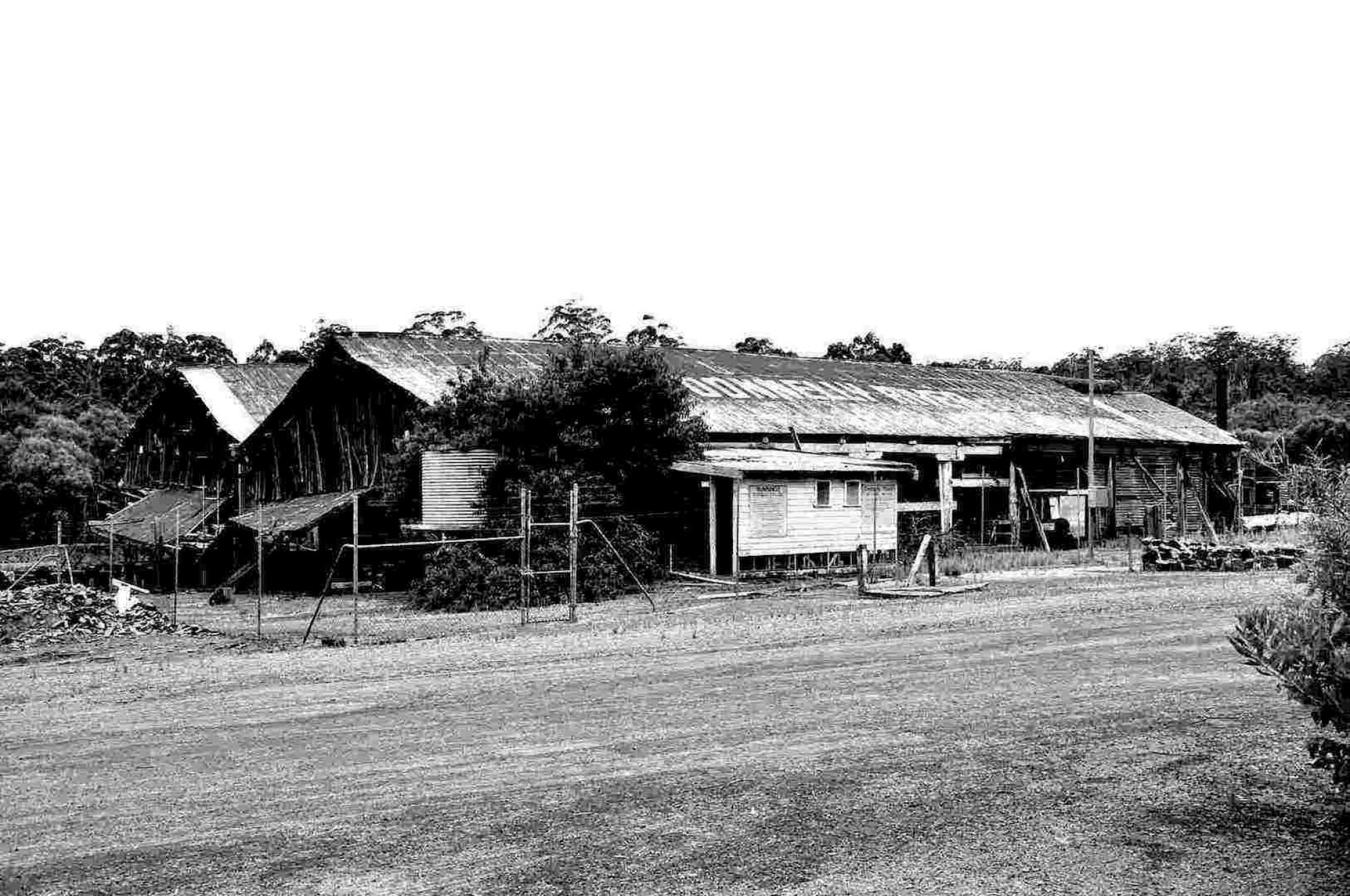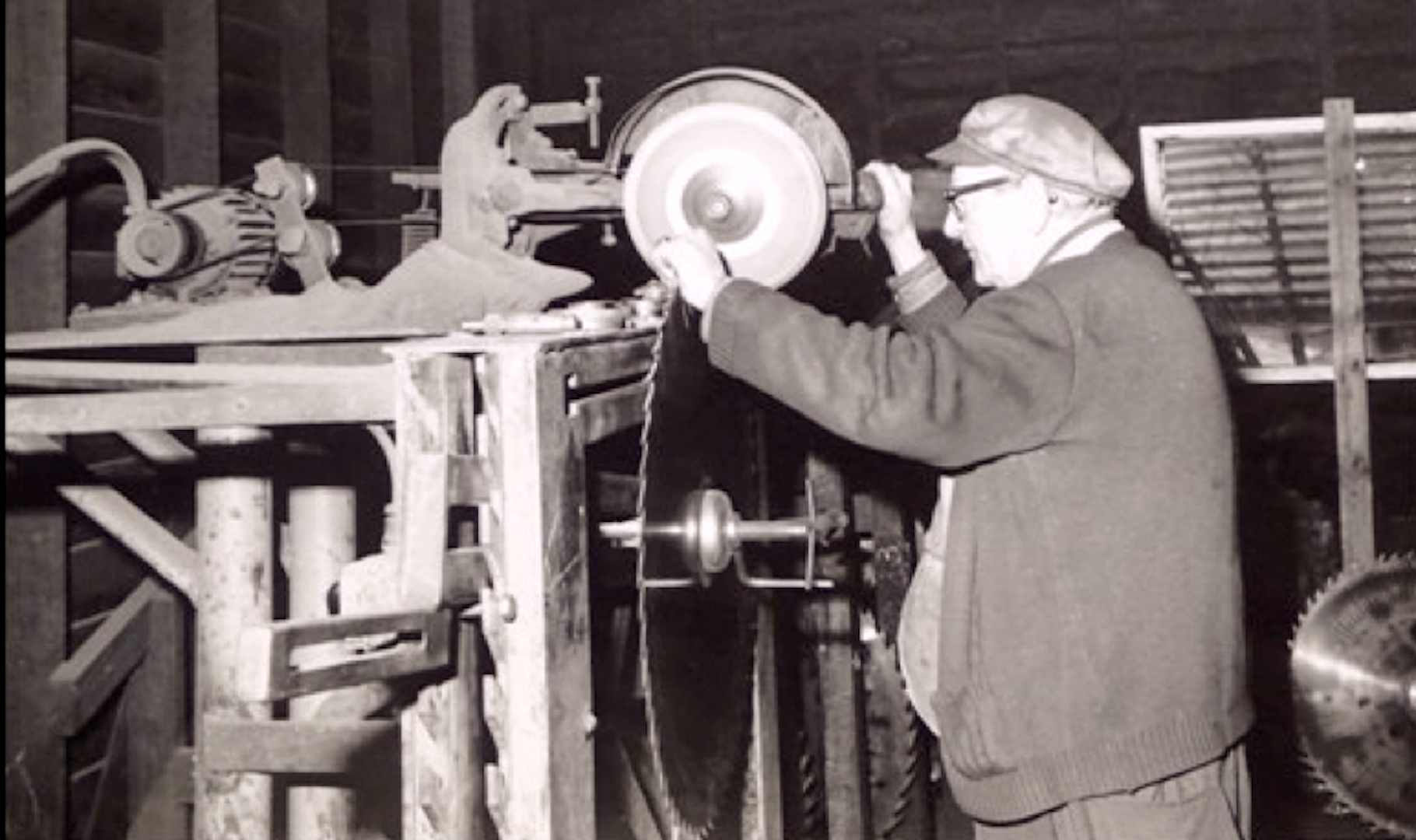Due to the long operating hours and thousands of super feet processed every day, the saw blades required sharpening frequently. Sharpening was a specialist function carried out by a “Saw Doctor” who closely guarded his techniques and entry to the saw Sharpening Room was restricted.
Saw Benches 1, 2, 3, 4, 5 and Powered Rollers
Bench Saw 1 was for cutting large sections. The flitches were positioned on a rail mounted trolley and assisted by the power rollers on the bench for further sawing to produce the larger timber sizes these were then moved along the rollers for yard storage. Off-cut timber from the No 1 was disposed into two hoppers discharging to conveyor belts under the floor. The first hopper waste timber was transported by the conveyor belts to the fire hole for disposing by burning. The second hopper off-cuts were transported by conveyor under the floor to the fruit case area.
Bench Saw 2 was for cutting moderate sections and Bench Saw 3 was for cutting standard sections. Sawn timber from No 2 and 3 benches and Docker saws were transported along a system of powered rollers and conveyors to the sorting table. Other off-cuts from these areas were cut for disposal into the fire hole. As the timber passed down the sorting table it was manually extracted according to size and length and stacked adjacent to the table prior to subsequent movement to the mill yard or planer.
Bench Saw 4 for cutting less valuable cuts.
Bench Saw 5 for the fruit case material from benches 2 & 3.
Powered Rollers were designed to assist with conveying timber throughout the mill.

